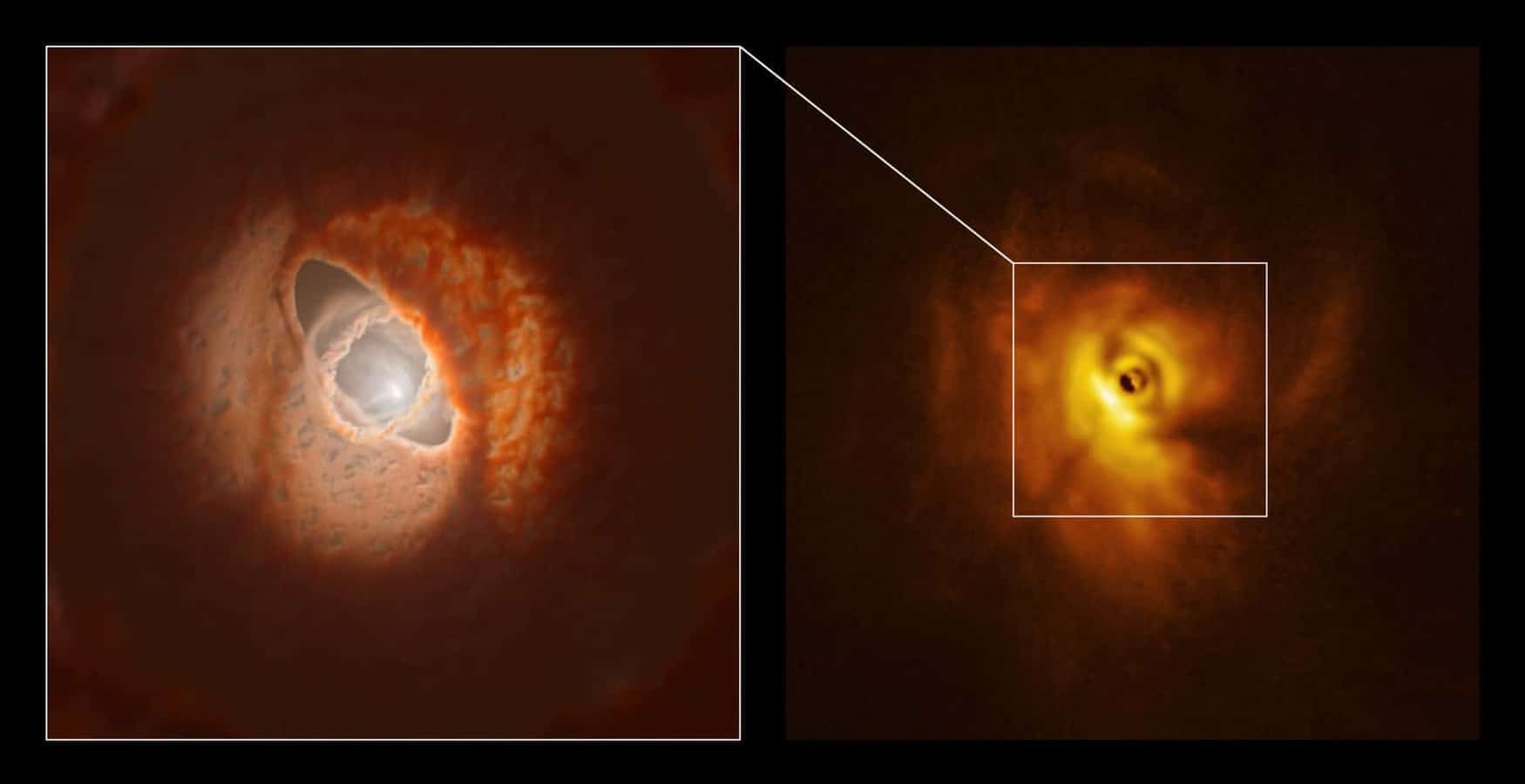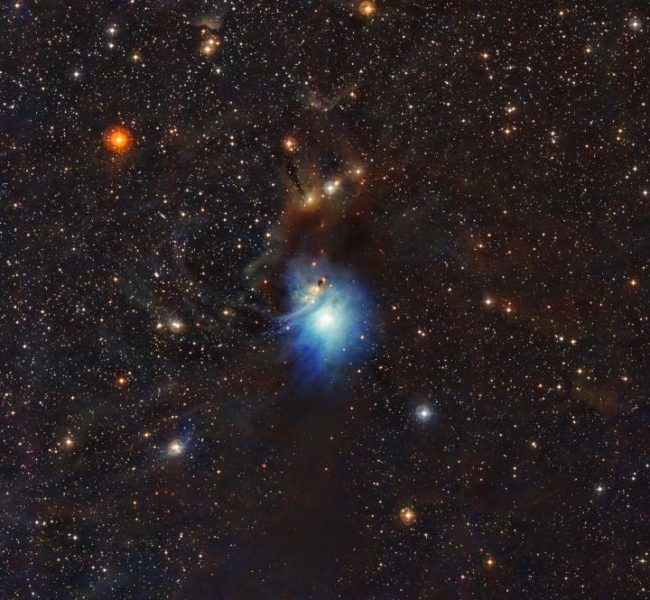Pioneering new research has revealed the first direct evidence that groups of stars can tear apart their planet-forming disk, leaving it warped and with tilted rings.
An international team of experts, led by astronomers at the University of Exeter and including the University of Michigan, has identified a stellar system where planet formation might take place in inclined dust and gas rings within a warped circumstellar disk around multiple stars.
Our solar system is remarkably flat, with the planets all orbiting in the same plane. However, this is not always the case, especially for planet-forming disks around multiple stars, like the object of the new study: GW Orionis. This system, located just 1,200 light-years away in the constellation of Orion, has three stars and a deformed, broken-apart disk surrounding them.

If a person were to stand on a potential planet around this system, they would see a stunning view of a tilted, multiple stellar constellation—similar to Star Wars’ Tatooine.
The results, published today in Science, were made possible thanks to observations with the European Southern Observatory’s Very Large Telescope (VLT), Georgia State University’s Center for High-Angular Resolution Astronomy telescope array (CHARA), and the Atacama Large Millimeter/submillimeter Array (ALMA).
The research is the first output of a large program examining young stellar systems that uses a pioneering infrared imager, called MIRC-X, which combines the light from all six telescopes of the CHARA telescope array. MIRC-X has been built by the universities of Michigan and Exeter as part of a European Research Council-funded research project.
The instrument has been designed to give new insights into how star and planet formation is taking place within the rotating, circumstellar disks of dense dust and gas surrounding young stars.
“This is not the first time astronomers have identified a warped disk, but it’s remarkable to have such a detailed understanding of the orbital dynamics and the effect on the disk all tied together with simulations,” said U-M astronomer John Monnier, whose team built the MIRC-X instrument used for orbit determinations. “Warped disks might be more common than thought, but they are not super common or a dominant mode of star and planet formation.”
This finding might explain some aspects of exoplanet demographics, such as misaligned planet orbits discovered by the Kepler space telescope and other planet-finding missions.
“We’re really excited that our new MIRC-X imager has provided the sharpest view yet of this intriguing system and revealed the gravitational dance of the three stars in the system. Normally, planets form around a flat disk of swirling dust and gas—yet our images reveal an extreme case where the disk is not flat at all,” said Stefan Kraus, professor of astrophysics at the University of Exeter, who led the research.
“Instead, it is warped and has a misaligned ring that has broken away from the disk. The misaligned ring is located in the inner part of the disk, close to the three stars. The effect is that the view of a potential planet within this ring looks remarkably like that of Tatooine, of Star Wars fame.”
The team observed the system with the SPHERE instrument on ESO’s VLT and with ALMA, and were able to image the inner ring and confirm its misalignment. The researchers also used the Gemini Observatory’s Gemini Planet Imager and Georgia State University’s CHARA Array with MIRC-X and observed shadows that this ring casts on the rest of the disk. This helped them figure out the 3D shape of the rings and overall disk geometry.
The new research reveals that this inner ring contains 30 Earth masses of dust, which could be enough to form planets.
“Any planets formed within the misaligned ring will orbit the star on highly oblique orbits and we predict that many planets on oblique, wide-separation orbits will be discovered in future planet imaging surveys,” said Alexander Kreplin of the University of Exeter.
“Since more than half of stars in the sky are born with one or more companions, this raises an exciting prospect: There could be an unknown population of exoplanets that orbit their stars on very inclined and distant orbits.”
To reach these conclusions, the team observed GW Orionis for more than 11 years and mapped the orbit of the stars with unprecedented precision. The international team, with researchers from the U.K., Belgium, Chile, France and the U.S., then combined their exhaustive observations with computer simulations to understand what had happened to the system. For the first time, they were able to clearly link the observed misalignments to the theoretical ‘disk-tearing effect,’ which suggests that the conflicting gravitational pull of stars in different planes can warp and break their surrounding disk.

